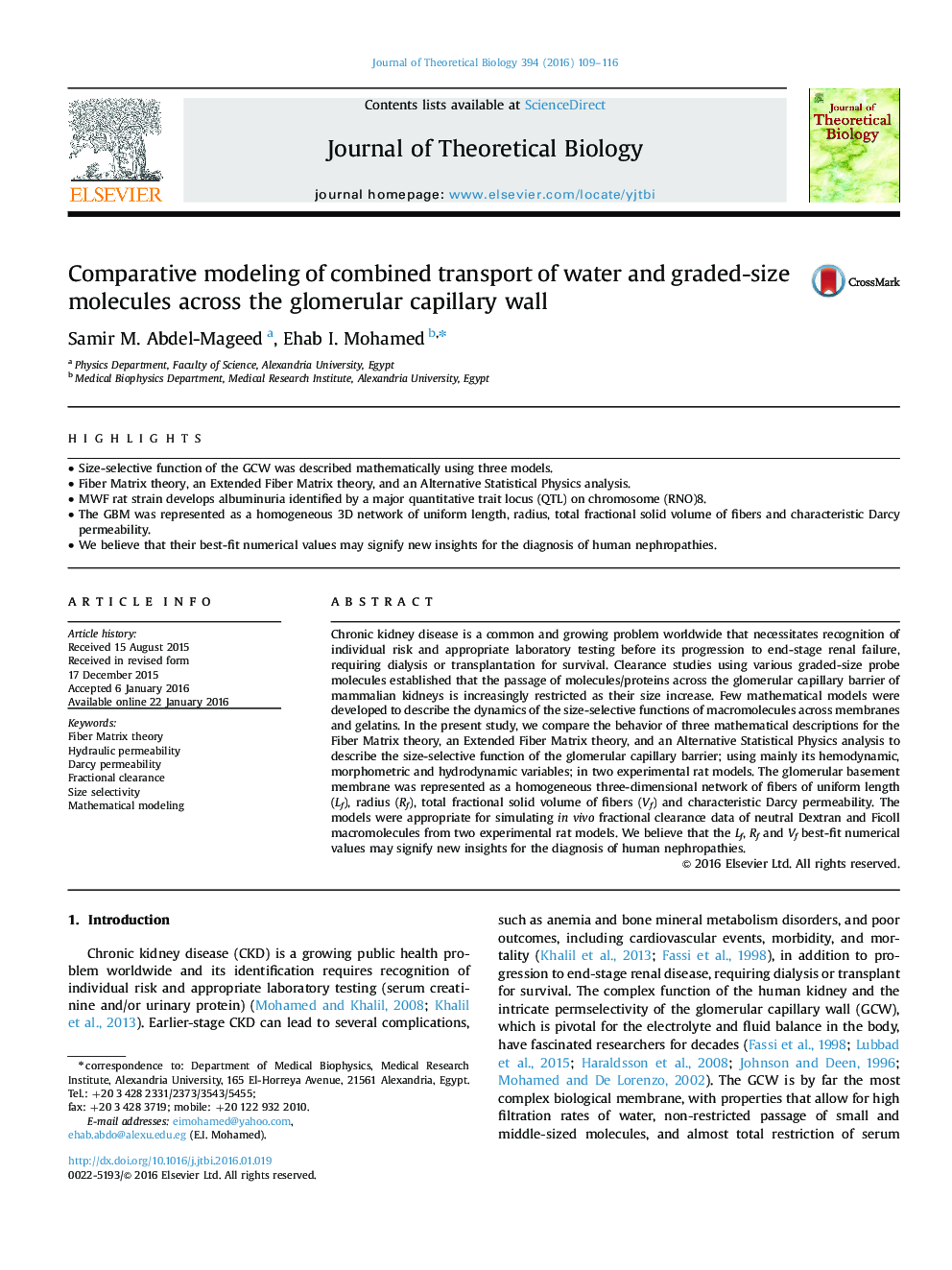| Article ID | Journal | Published Year | Pages | File Type |
|---|---|---|---|---|
| 4495889 | Journal of Theoretical Biology | 2016 | 8 Pages |
•Size-selective function of the GCW was described mathematically using three models.•Fiber Matrix theory, an Extended Fiber Matrix theory, and an Alternative Statistical Physics analysis.•MWF rat strain develops albuminuria identified by a major quantitative trait locus (QTL) on chromosome (RNO)8.•The GBM was represented as a homogeneous 3D network of uniform length, radius, total fractional solid volume of fibers and characteristic Darcy permeability.•We believe that their best-fit numerical values may signify new insights for the diagnosis of human nephropathies.
Chronic kidney disease is a common and growing problem worldwide that necessitates recognition of individual risk and appropriate laboratory testing before its progression to end-stage renal failure, requiring dialysis or transplantation for survival. Clearance studies using various graded-size probe molecules established that the passage of molecules/proteins across the glomerular capillary barrier of mammalian kidneys is increasingly restricted as their size increase. Few mathematical models were developed to describe the dynamics of the size-selective functions of macromolecules across membranes and gelatins. In the present study, we compare the behavior of three mathematical descriptions for the Fiber Matrix theory, an Extended Fiber Matrix theory, and an Alternative Statistical Physics analysis to describe the size-selective function of the glomerular capillary barrier; using mainly its hemodynamic, morphometric and hydrodynamic variables; in two experimental rat models. The glomerular basement membrane was represented as a homogeneous three-dimensional network of fibers of uniform length (Lf), radius (Rf), total fractional solid volume of fibers (Vf) and characteristic Darcy permeability. The models were appropriate for simulating in vivo fractional clearance data of neutral Dextran and Ficoll macromolecules from two experimental rat models. We believe that the Lf, Rf and Vf best-fit numerical values may signify new insights for the diagnosis of human nephropathies.
